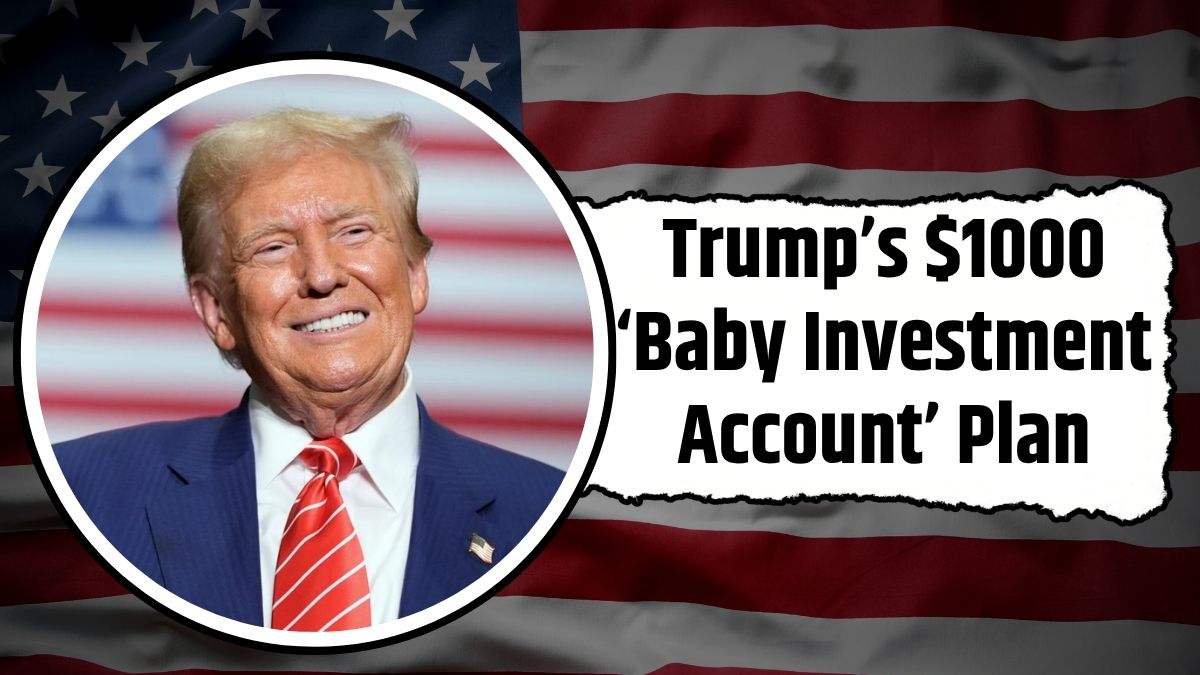A bold federal proposal backed by former President Donald Trump could give every baby born in the United States between 2025 and 2028 a $1,000 government-funded investment account. Part of a sweeping legislative effort titled the One Big Beautiful Bill, the proposal has already cleared the House of Representatives and is now under review in the Senate.
Nicknamed “Trump Accounts,” this initiative is aimed at helping American children build long-term financial security from birth. If passed into law, the program could begin as early as 2026, automatically providing a tax-deferred investment account to every newborn during the four-year eligibility window.
What the Newborn Investment Account Includes
Under this proposal, the federal government would deposit $1,000 into an investment account for every child born in the U.S. between January 1, 2025, and December 31, 2028. The money would be invested in stock market index funds, with no taxes owed on growth until the funds are withdrawn.
Key features of the Trump Accounts include:
| Feature | Details |
|---|---|
| Initial Deposit | $1,000 from the federal government |
| Eligible Birth Years | 2025 to 2028 |
| Family Contributions | Up to $5,000 per year |
| Investment Type | Stock index funds |
| Tax Benefits | Tax-deferred growth |
| Account Ownership | In the child’s name |
Families would also be permitted to add up to $5,000 per year to the account. Over time, the power of compound interest could help the accounts grow significantly by the time the child reaches adulthood.
Why the Trump Accounts Were Proposed
The central idea behind the proposal is financial equality at birth. Supporters of the bill argue that giving every child—even those from low-income families—a starting investment could help them build wealth, prepare for college, buy a home, or start a business in adulthood.
Prominent business leaders like Michael Dell (Dell Technologies CEO), David Solomon (Goldman Sachs), and Dara Khosrowshahi (Uber) have backed the concept. They believe this approach could reshape how future generations of Americans accumulate assets and opportunity.
What Could the Account Be Worth Over Time?
Even without family contributions, a $1,000 investment in index funds growing at a 7% average annual return could result in:
- Around $3,380 by age 18
- Approximately $7,600 by age 30
If a family contributes the maximum $5,000 annually for 18 years, the account could grow to over $150,000, depending on market performance. This model illustrates how even modest, early investments can have long-term wealth-building power.
How It Differs from Other Programs
The Trump Accounts differ from other state or federal savings initiatives, such as “baby bonds,” in one critical way: income is not a factor. Every child, regardless of family wealth or background, would receive the same $1,000 starting amount.
Unlike income-tested programs, which aim to close wealth gaps by giving more to those with less, the Trump plan takes a universal approach—an idea that has received both praise and criticism from across the political spectrum.
Criticism and Concerns Raised
Despite its potential benefits, the Trump-backed plan has drawn serious criticism from economists, lawmakers, and policy analysts.
- Unequal Benefit Distribution:
Critics argue that wealthier families will benefit the most, since they’re more likely to contribute the full $5,000 annually, compounding their children’s future financial advantage. - High Federal Cost:
With roughly 3.6 million babies born in the U.S. annually, the program would cost over $3.6 billion per year, not including administrative costs or potential matching incentives. - Better Use of Resources?:
Opponents suggest that the funds might be more effective if redirected to healthcare, child nutrition, or early education programs, which directly impact childhood well-being in the short term.
What Supporters Say
Proponents of the plan argue that wealth-building tools should not be limited to the wealthy. By starting every American off with a small stake in the market, the government can encourage financial literacy, saving habits, and economic mobility from an early age.
They also believe that uniform benefits avoid stigmatizing lower-income recipients and simplify administration by removing the need for means testing.
What Happens Next?
The Trump Accounts are included in the One Big Beautiful Bill, a broad legislative package that covers various economic, tax, and social policy changes. Having passed the House of Representatives, the bill now faces a Senate review.
If passed by the Senate and signed into law, the program could launch in early 2026. Parents would not need to apply; accounts would be created automatically for all eligible children born between 2025 and 2028.
How the Program Would Be Implemented
Once approved, the program would operate through a centralized federal system, likely linked to birth registration. Families would receive access credentials for managing and viewing their child’s account, with clear rules on how and when funds can be used.
The investment strategy would be conservative, focusing on low-cost index funds to ensure stable, long-term returns. Withdrawals would be limited to certain qualified uses—such as higher education, homeownership, or starting a business—to ensure the funds serve their intended purpose.
Broader Implications of the Proposal
If implemented, the Trump Account program could significantly reshape how American families approach financial planning from birth. It may also spark new conversations around:
- Universal wealth-building models
- The role of government in personal finance
- Inequality and intergenerational opportunity
But the proposal is still in flux. Until the Senate delivers its verdict, the $1,000 newborn accounts remain a possibility—not a guarantee.







